
Geared up for our biking adventure!
The third day of our trip was my favorite day because we had a chance to see authentic village life, both on land and on water. I am amazed at the varieties of lifestyles around the world!
Joe and I kicked off the day with a biking adventure on Cat Ba Island. We had to take a ferry to the island, and were all safetied up with life vests and helmets :)
According to our cruise director, Cat Ba Island is the largest island in Halong Bay and was a significant land mass during the Vietnam War. The island was a strategic look-out and transfer point as well as a safe hideout for Vietnamese generals. We were told that the Vietnamese army filled the island with women and children during the war to dissuade the American army from bombing it to take over.
Today, Cat Ba is a popular stop for tourists. We rode our bikes along a winding and hilly path about three kilometers into the island until we came across the Viet Hai village. The scenery along the way was lush and peaceful, and extremely untouched. It was really nice to see a "not-so-touristy" area.
Joe and I kicked off the day with a biking adventure on Cat Ba Island. We had to take a ferry to the island, and were all safetied up with life vests and helmets :)
According to our cruise director, Cat Ba Island is the largest island in Halong Bay and was a significant land mass during the Vietnam War. The island was a strategic look-out and transfer point as well as a safe hideout for Vietnamese generals. We were told that the Vietnamese army filled the island with women and children during the war to dissuade the American army from bombing it to take over.
Today, Cat Ba is a popular stop for tourists. We rode our bikes along a winding and hilly path about three kilometers into the island until we came across the Viet Hai village. The scenery along the way was lush and peaceful, and extremely untouched. It was really nice to see a "not-so-touristy" area.
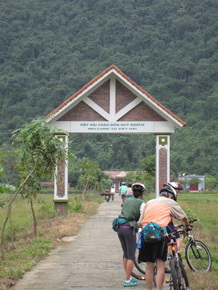
Gate to Viet Hai village
Cat Ba island is inhabited by only about 68 families with 400 people in total. Villagers live in very basic houses and tend to the fields for a living. Although the homes are basic (I don't think they have bathrooms and modern plumbing) some of them did have satellite dishes and televisions, which I found amusing.
The families of Viet Hai were very friendly and greeted us with hellos as we rode past their homes. We were told they like to see outsiders, especially so their children can see what different people look like. Speaking of children, there were many cuties on the island. There were also a lot of dogs and puppies!
Our tour guide told us that the government helps support the inhabitants of the island. They pay the expenses for any child who wants to go to mainland Vietnam to study. I'm also guessing the government has a hand in the way fresh water and goods are shipped over to the island. Some of the staff from our cruise ship are from Cat Ba, and they got to visit with their families during our stop.
The families of Viet Hai were very friendly and greeted us with hellos as we rode past their homes. We were told they like to see outsiders, especially so their children can see what different people look like. Speaking of children, there were many cuties on the island. There were also a lot of dogs and puppies!
Our tour guide told us that the government helps support the inhabitants of the island. They pay the expenses for any child who wants to go to mainland Vietnam to study. I'm also guessing the government has a hand in the way fresh water and goods are shipped over to the island. Some of the staff from our cruise ship are from Cat Ba, and they got to visit with their families during our stop.
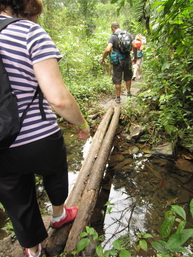
A wobbly footbridge on our hike
While on the island, our guide took us on a hike through one of the forests to see a cave that was used as a hideout during the Vietnam War. The hike was rough... it was muddy, the brush was thick, there were lots of mosquitos, and some parts of the path were challenging to get across (such as the wobbly footbridge pictured to the left). Parts of the path are really narrow with low-hanging branches, so we found ourselves crouching around.
I was relieved when we finally reached the cave. The cave was really dark, and at first, really creepy. Luckily, some people had flashlights with them so we were able to see the formations inside the cave, which were really neat. We also saw an inscription on the cave that was written in 1966.
I was relieved when we finally reached the cave. The cave was really dark, and at first, really creepy. Luckily, some people had flashlights with them so we were able to see the formations inside the cave, which were really neat. We also saw an inscription on the cave that was written in 1966.
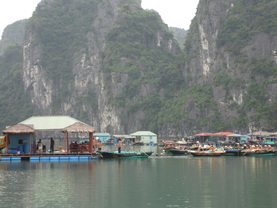
Houses in the floating village
Our second excursion of the day was to a floating village called Vung Vieng. This was one of the most interesting experiences I've had in Southeast Asia.
We were ferried from our boat to a central meeting place in the village that served as a rowboat "taxi" stand. Guides in rowboats were gathered to shuttle us through the village. Since the villagers live on the water, they are very skilled at maneuvering boats. In fact, we saw a young boy, probably about eight years old, swiftly rowing a boat with his feet! Some of the rower guides that met our tour group were little old women that surprised me with their strength and agility. After rowing a kayak a few times in my life, I know that paddling is strenuous, hard work.
Once in our boat, we were shuttled past the many homes of the floating village. As you can see in the photo above, the homes are literally floating in the water. Many of them are made of basic materials, with little more than a bed and TV inside. It appeared that they were anchored down in some fashion, and many homes had floating barrels connected to them. Because of the thin walls and sometimes non-existent doors, the homes seemed to offer little privacy for the families. I imagine neighbors can hear everything going on next door. What really surprised me, is that almost every family had at least one dog on their floating residence. I can't imagine how the dogs get enough exercise since they don't have a lot of room to run around.
After seeing this, a barrage of questions went through my head. How did the people build these homes on the water? Where do they go to the bathroom? Where do the dogs go to the bathroom? What happens if they have a medical emergency, or if they need to birth a child? Where do they put their garbage? Unfortunately for me, our guide didn't speak English, so my questions weren't answered (and unfortunately for Joe, he got an earful of questions as I wondered about this stuff out loud).
One thing we did learn, was how the villagers got things like fresh water and groceries. Everyday, grocery store boats go around to all of the homes in the village. They stop right at every door and the villagers can purchase what they need.
We were ferried from our boat to a central meeting place in the village that served as a rowboat "taxi" stand. Guides in rowboats were gathered to shuttle us through the village. Since the villagers live on the water, they are very skilled at maneuvering boats. In fact, we saw a young boy, probably about eight years old, swiftly rowing a boat with his feet! Some of the rower guides that met our tour group were little old women that surprised me with their strength and agility. After rowing a kayak a few times in my life, I know that paddling is strenuous, hard work.
Once in our boat, we were shuttled past the many homes of the floating village. As you can see in the photo above, the homes are literally floating in the water. Many of them are made of basic materials, with little more than a bed and TV inside. It appeared that they were anchored down in some fashion, and many homes had floating barrels connected to them. Because of the thin walls and sometimes non-existent doors, the homes seemed to offer little privacy for the families. I imagine neighbors can hear everything going on next door. What really surprised me, is that almost every family had at least one dog on their floating residence. I can't imagine how the dogs get enough exercise since they don't have a lot of room to run around.
After seeing this, a barrage of questions went through my head. How did the people build these homes on the water? Where do they go to the bathroom? Where do the dogs go to the bathroom? What happens if they have a medical emergency, or if they need to birth a child? Where do they put their garbage? Unfortunately for me, our guide didn't speak English, so my questions weren't answered (and unfortunately for Joe, he got an earful of questions as I wondered about this stuff out loud).
One thing we did learn, was how the villagers got things like fresh water and groceries. Everyday, grocery store boats go around to all of the homes in the village. They stop right at every door and the villagers can purchase what they need.
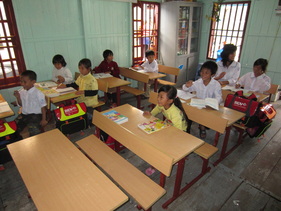
The Vung Vieng school
After passing several homes, we came to another complex type area that we learned was the village's school as well as one of the village's many fish farms. The boat docked here and we were able to get out and walk around.
The first thing we examined were the fish farms. Many of the villagers make money by farming fish. The school complex as well as many of the homes have small netted "tanks" built into Halong Bay. Inside these tanks are many different types of fish. Some are meant for food while others are exotic fish that are meant to be pets. We saw some beautiful fish, including ones that looked like Dory from the movie Finding Nemo. Other fish were ugly and huge, and frankly scary looking. Some of the big, ugly fish in one of the tanks swam up to the surface as if they would jump out and attack us.
The next thing we saw was the village school. Lucky for us, there was a class in session so we got to see the children in their classroom. The school is a very basic one-room school house. It was recently renovated thanks to a generous donation from a school in Sydney, Australia. We were told that the village children have their own small rowboats which they use to transport themselves to school. They liked the little break they got thanks to our visit, and graciously posed for photos.
The first thing we examined were the fish farms. Many of the villagers make money by farming fish. The school complex as well as many of the homes have small netted "tanks" built into Halong Bay. Inside these tanks are many different types of fish. Some are meant for food while others are exotic fish that are meant to be pets. We saw some beautiful fish, including ones that looked like Dory from the movie Finding Nemo. Other fish were ugly and huge, and frankly scary looking. Some of the big, ugly fish in one of the tanks swam up to the surface as if they would jump out and attack us.
The next thing we saw was the village school. Lucky for us, there was a class in session so we got to see the children in their classroom. The school is a very basic one-room school house. It was recently renovated thanks to a generous donation from a school in Sydney, Australia. We were told that the village children have their own small rowboats which they use to transport themselves to school. They liked the little break they got thanks to our visit, and graciously posed for photos.
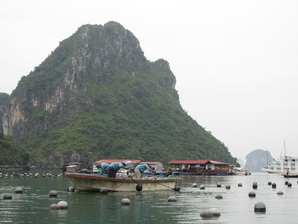
Pearl farm
Our last stop was at Vung Vieng's pearl farm, another source of income for the village. The farm consists of a wide area of nets within the bay. The process for farming pearls is quite intricate. Villagers first collect baby pearls that are apparently pieces of tissue from a larger donor shell. Then, they take a smaller recipient oyster, pry it open, and implant the baby pearl. This process is surprisingly bloody... I had no idea oysters could bleed so much.
The recipient oysters are then placed in cages and put into the pearl farm netted area. The oysters stay in the water for two years, allowing the baby pearls to develop into bigger pearls, which are then harvested for material goods. The mature pearls we saw were beautiful - they come in many different colors and sizes.
As we ferried back to the Au Co, I couldn't stop thinking about how unreal life on a floating village seems to someone like me who comes from a far more cushy lifestyle. I'm amazed by the survival tactics the Vung Vieng villagers have used to maintain their way of living!
The recipient oysters are then placed in cages and put into the pearl farm netted area. The oysters stay in the water for two years, allowing the baby pearls to develop into bigger pearls, which are then harvested for material goods. The mature pearls we saw were beautiful - they come in many different colors and sizes.
As we ferried back to the Au Co, I couldn't stop thinking about how unreal life on a floating village seems to someone like me who comes from a far more cushy lifestyle. I'm amazed by the survival tactics the Vung Vieng villagers have used to maintain their way of living!

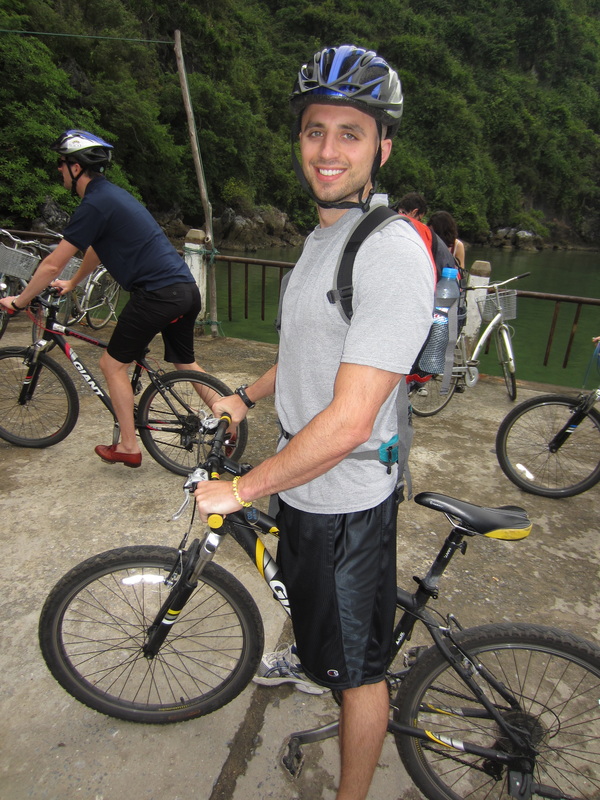
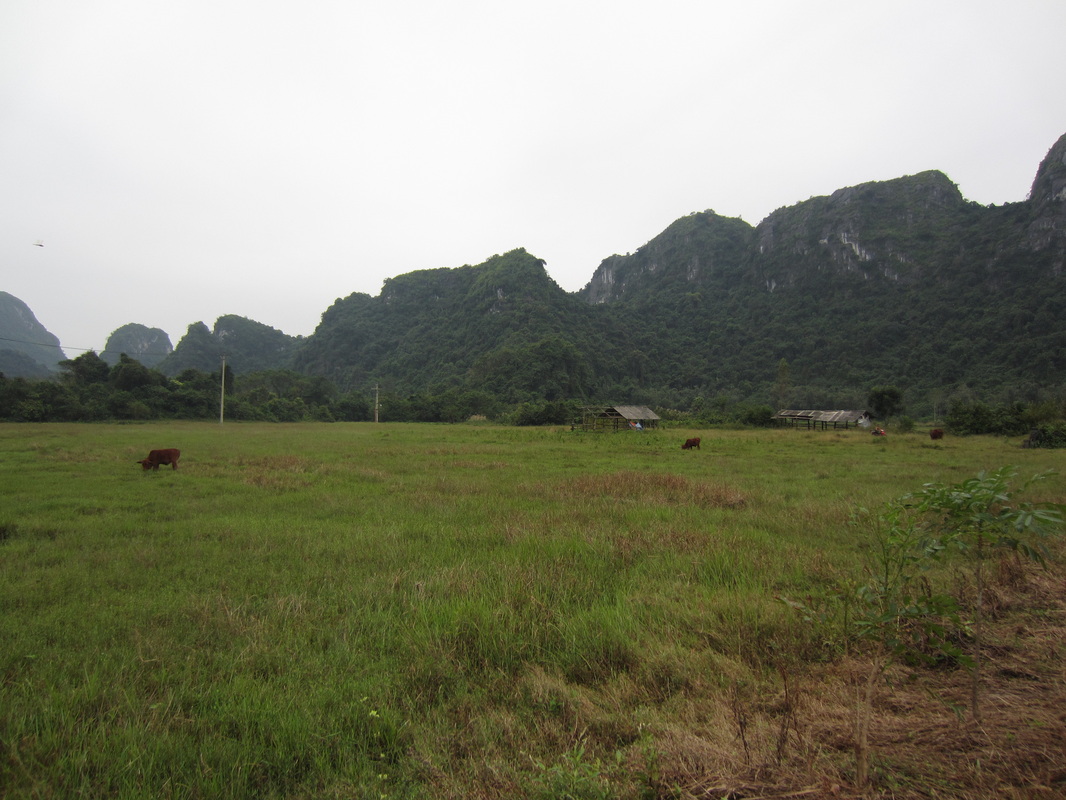
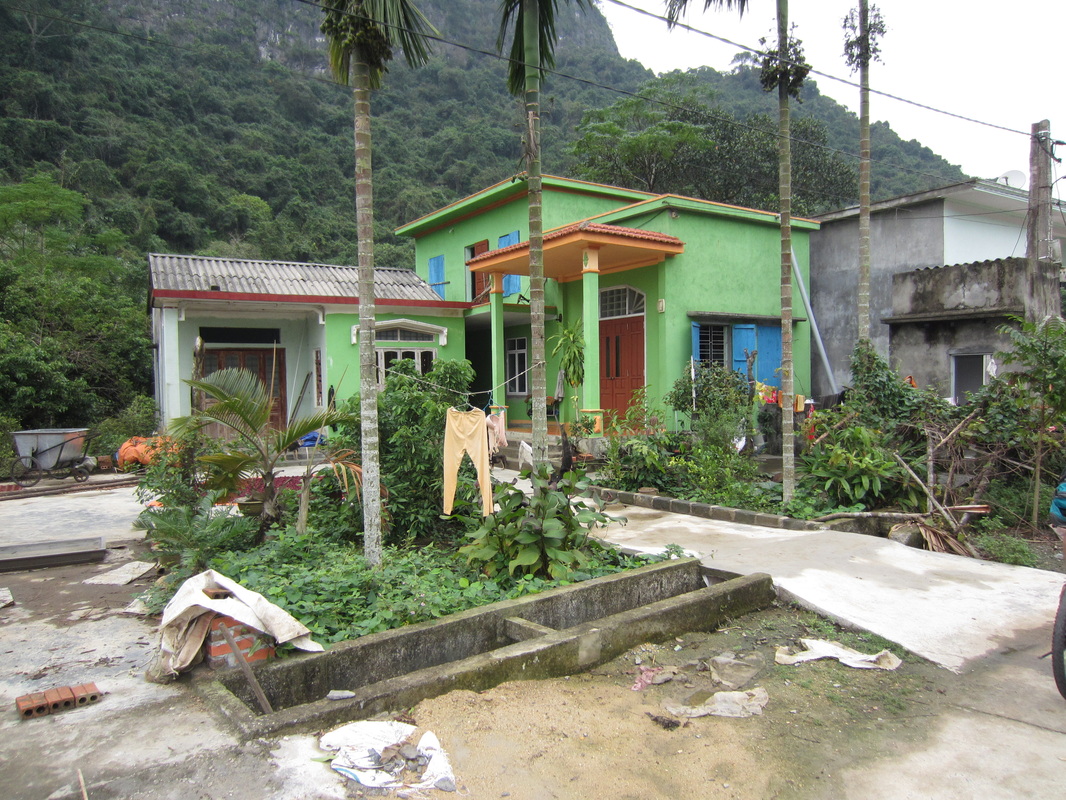

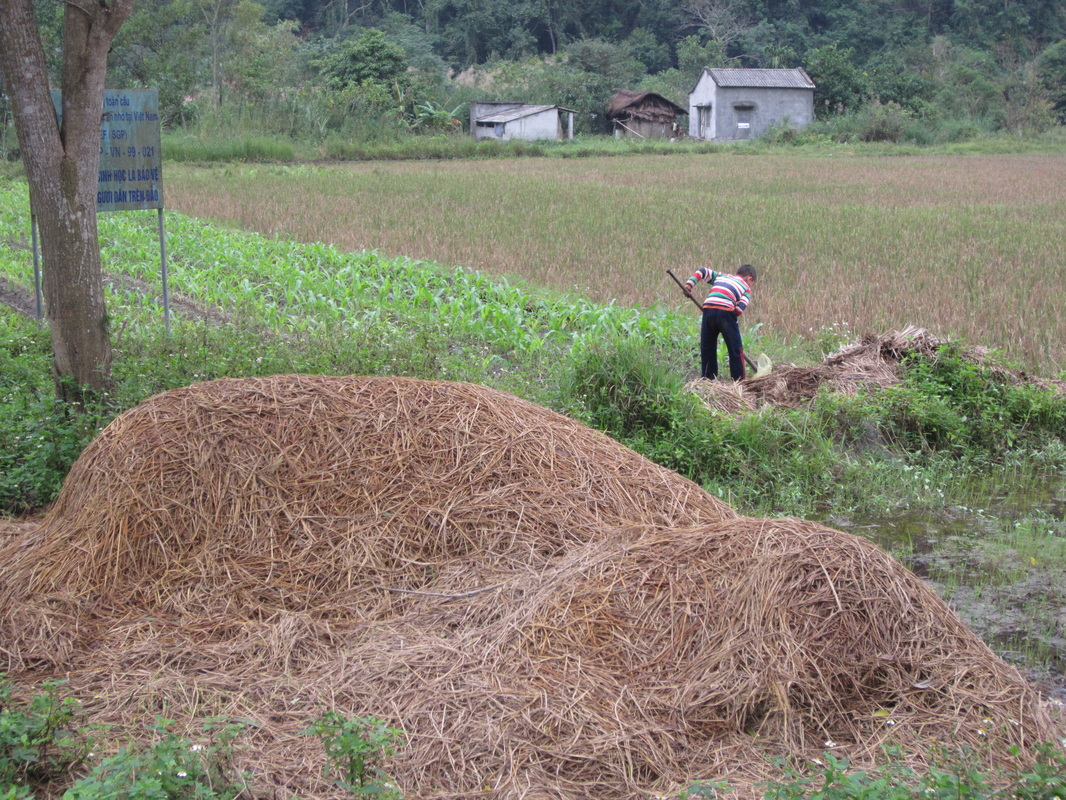


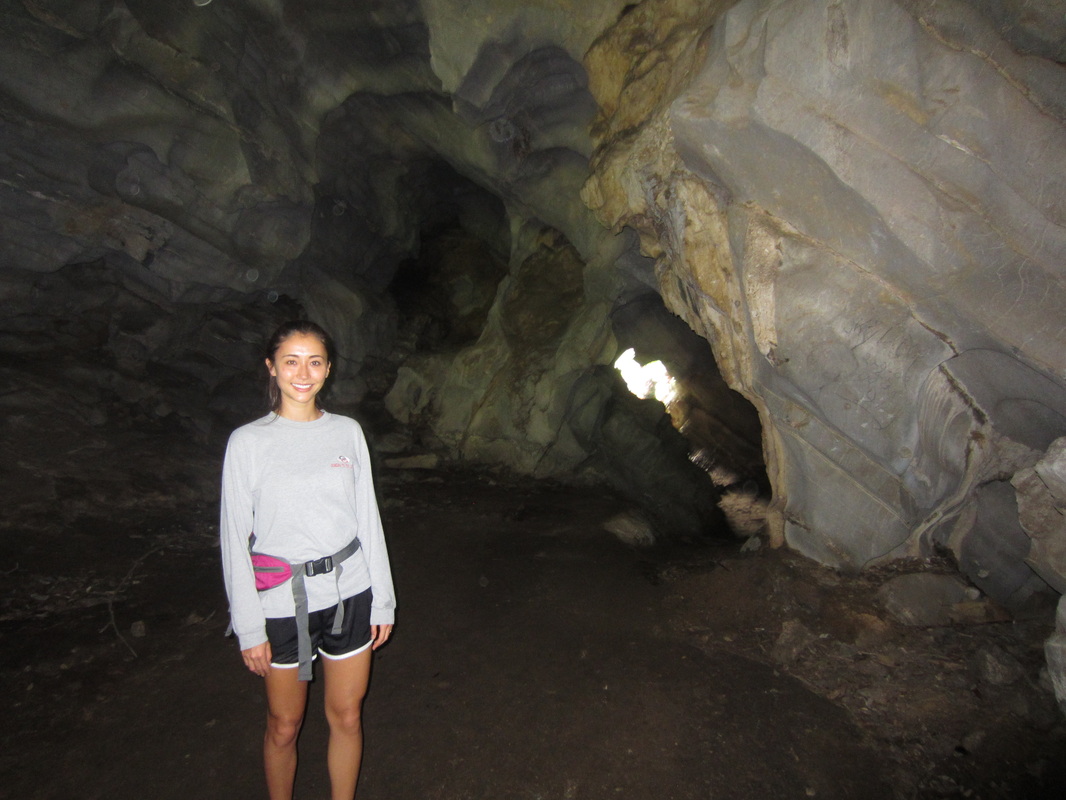
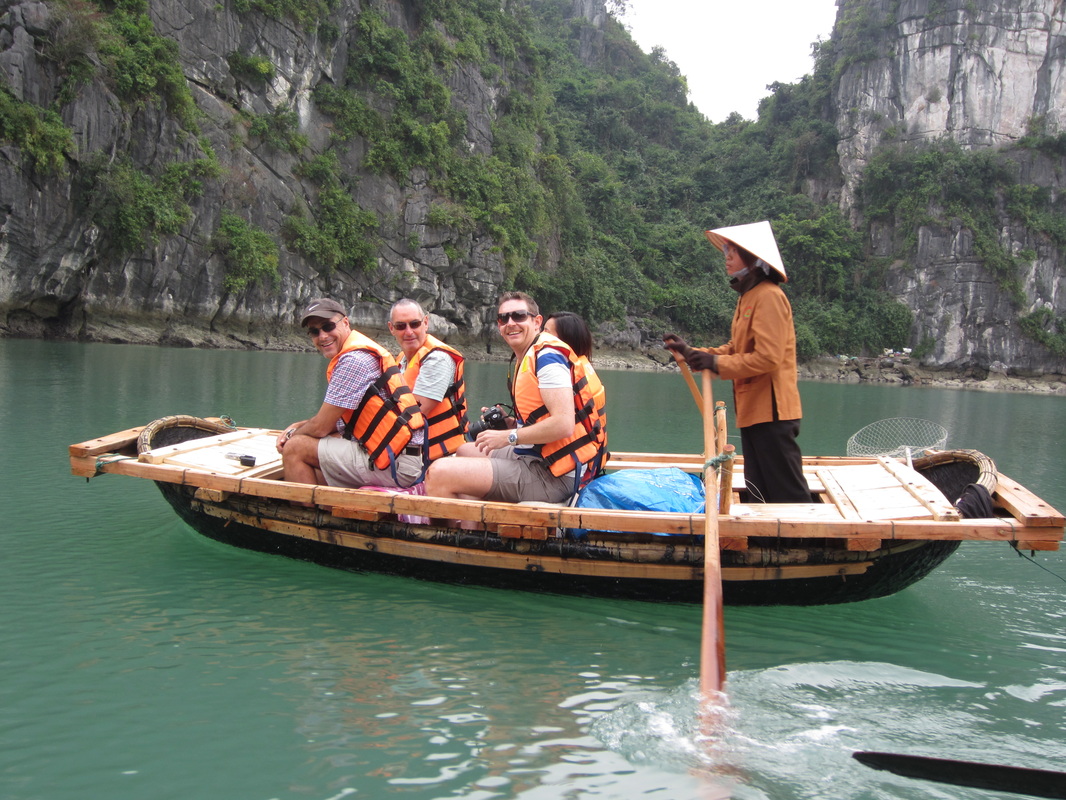
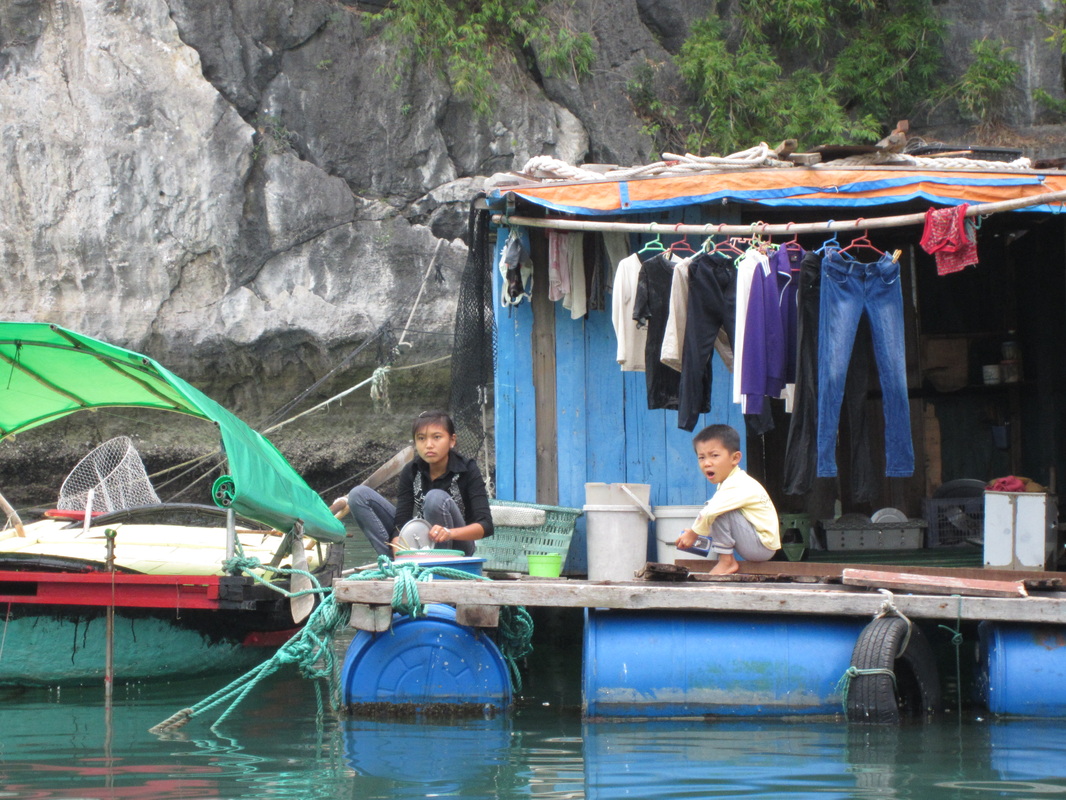
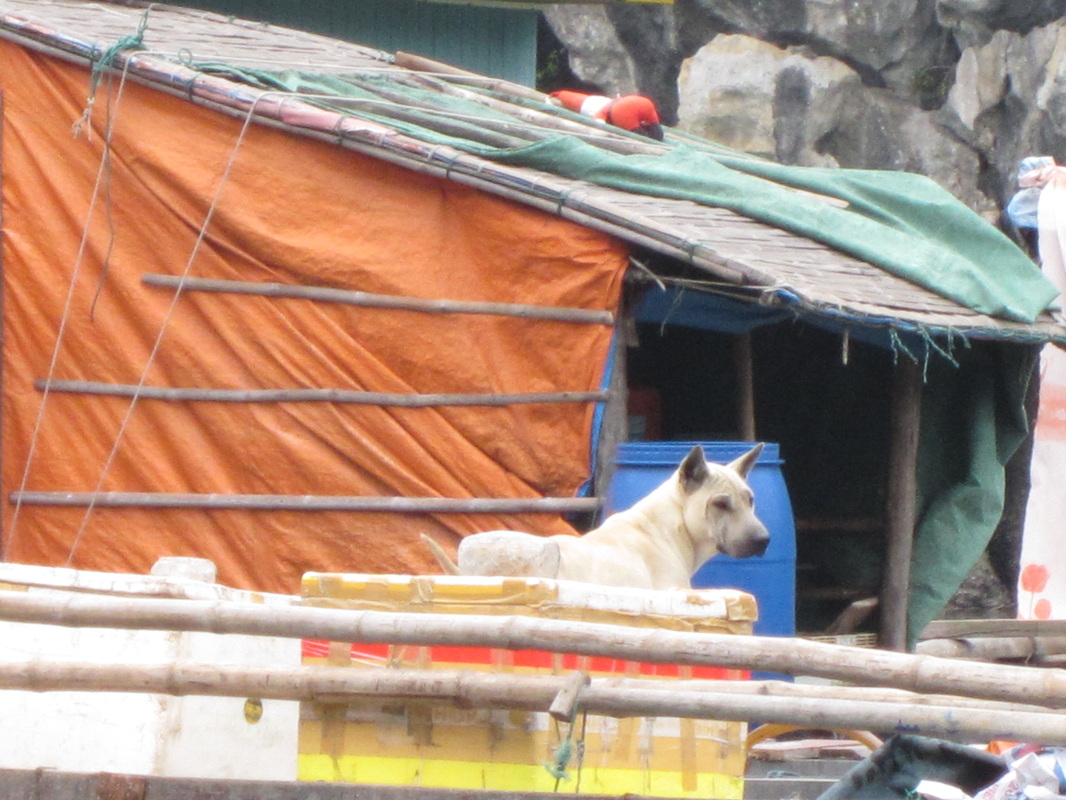
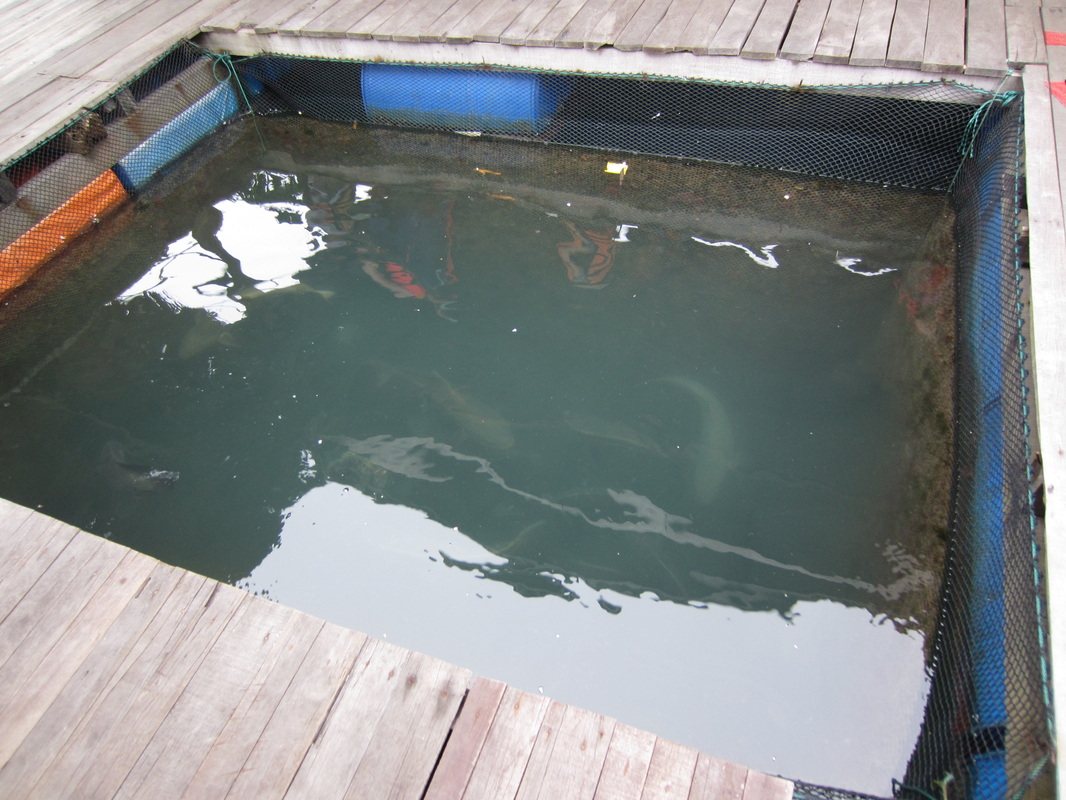
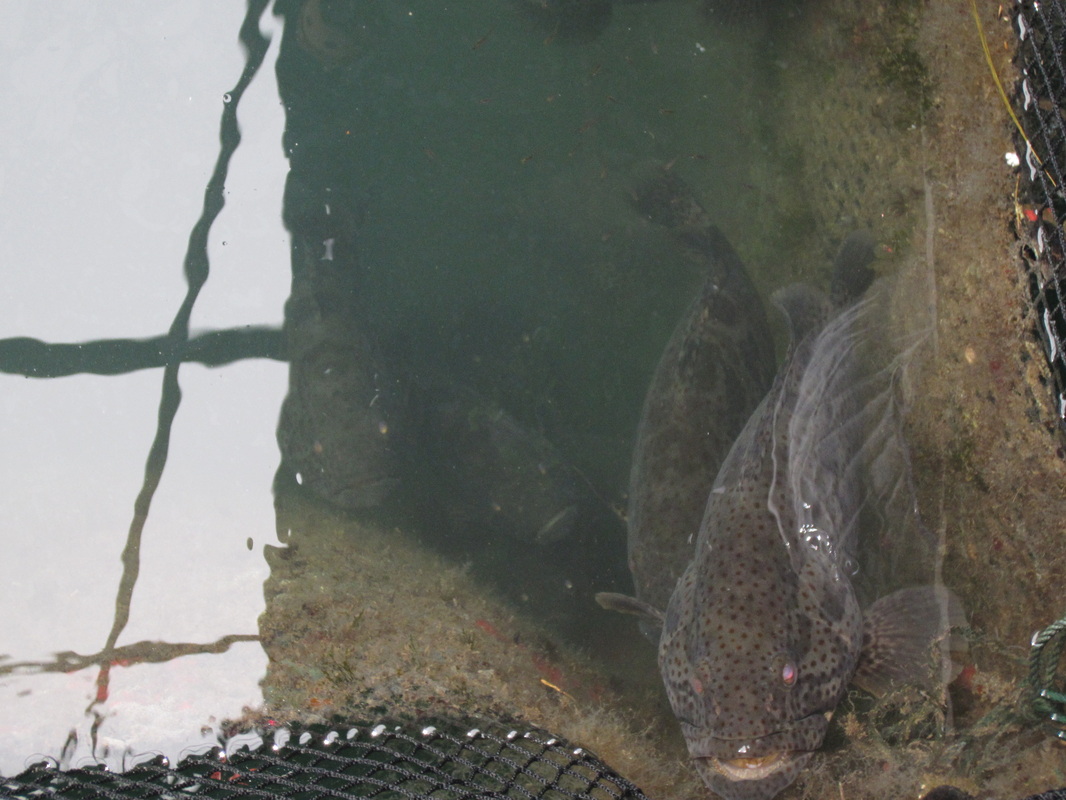
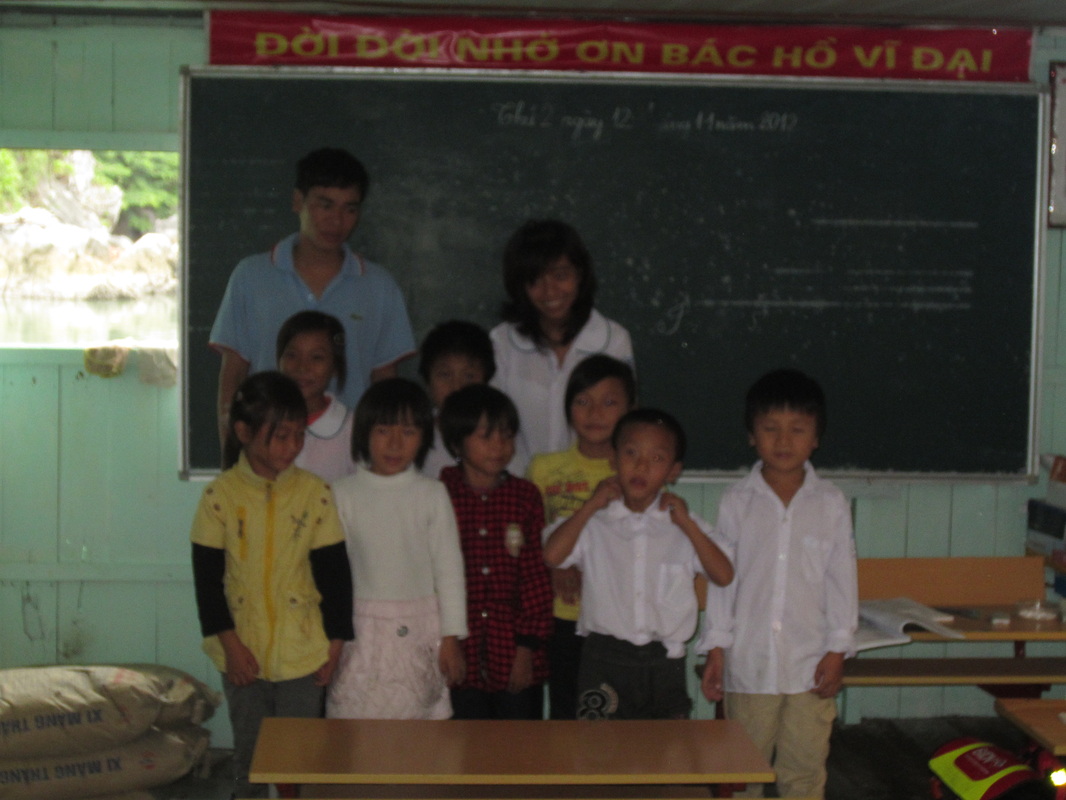

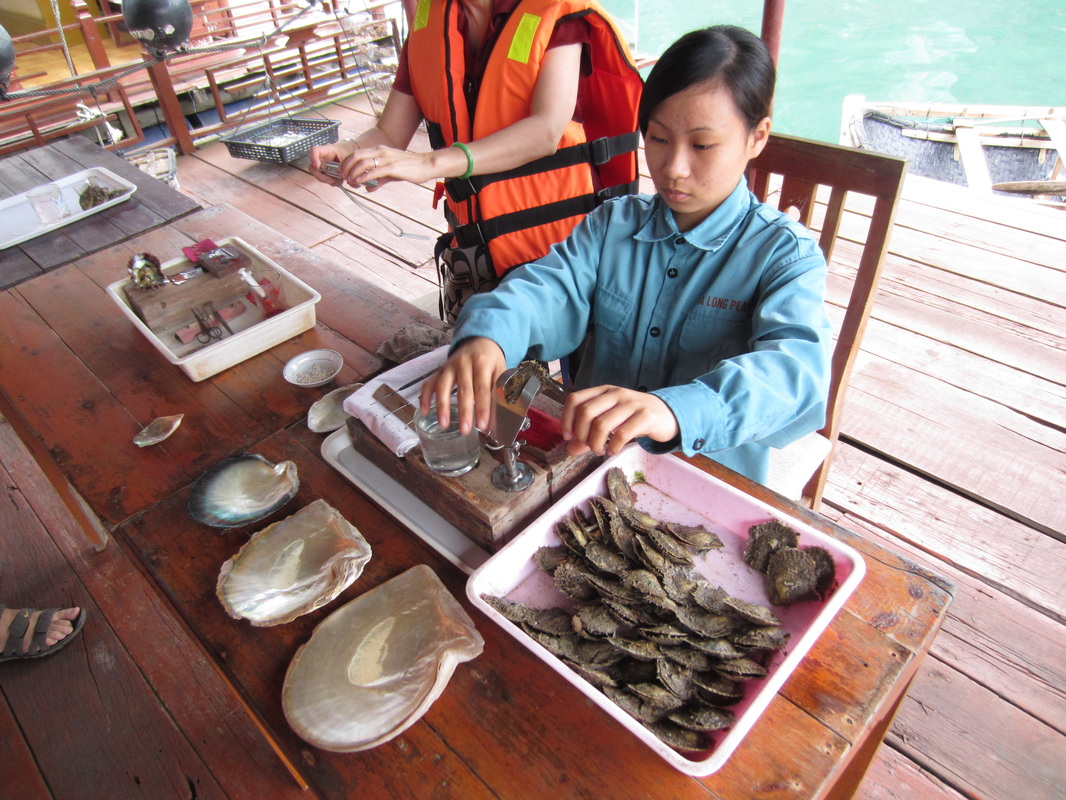
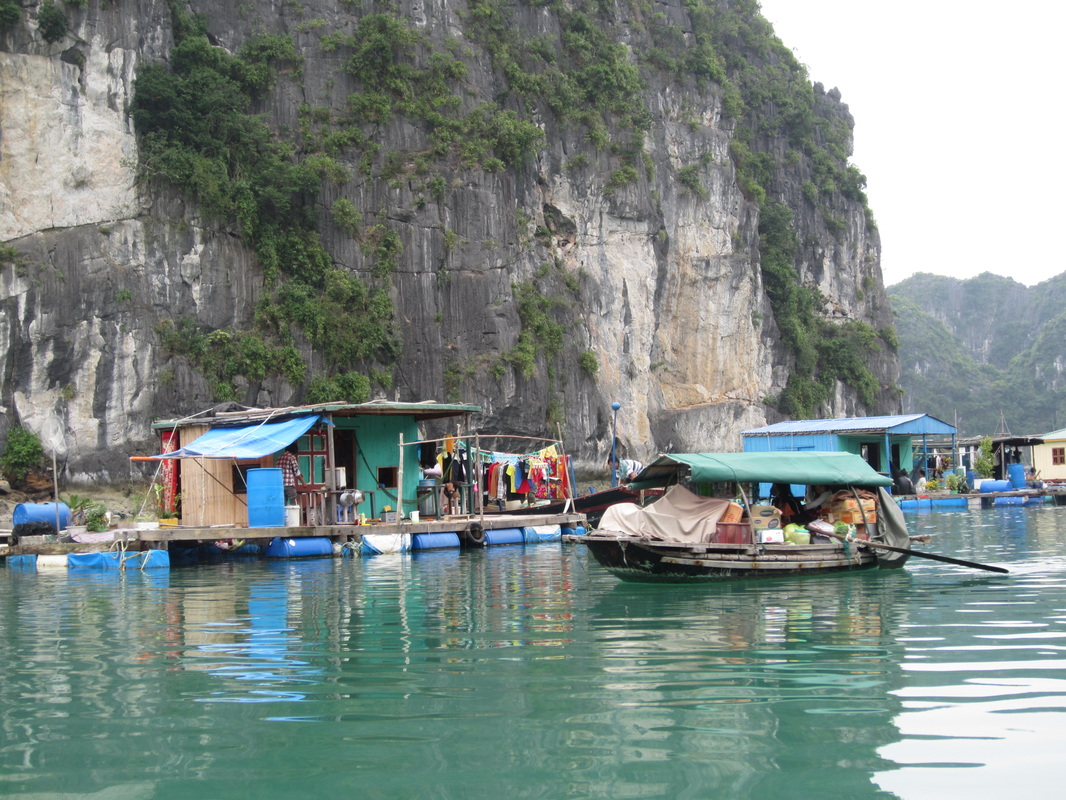

 RSS Feed
RSS Feed